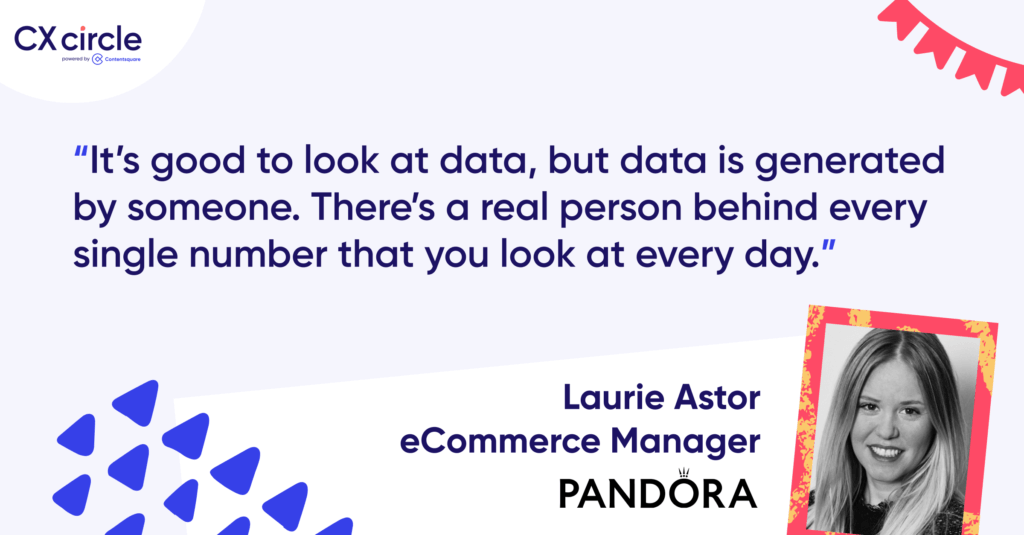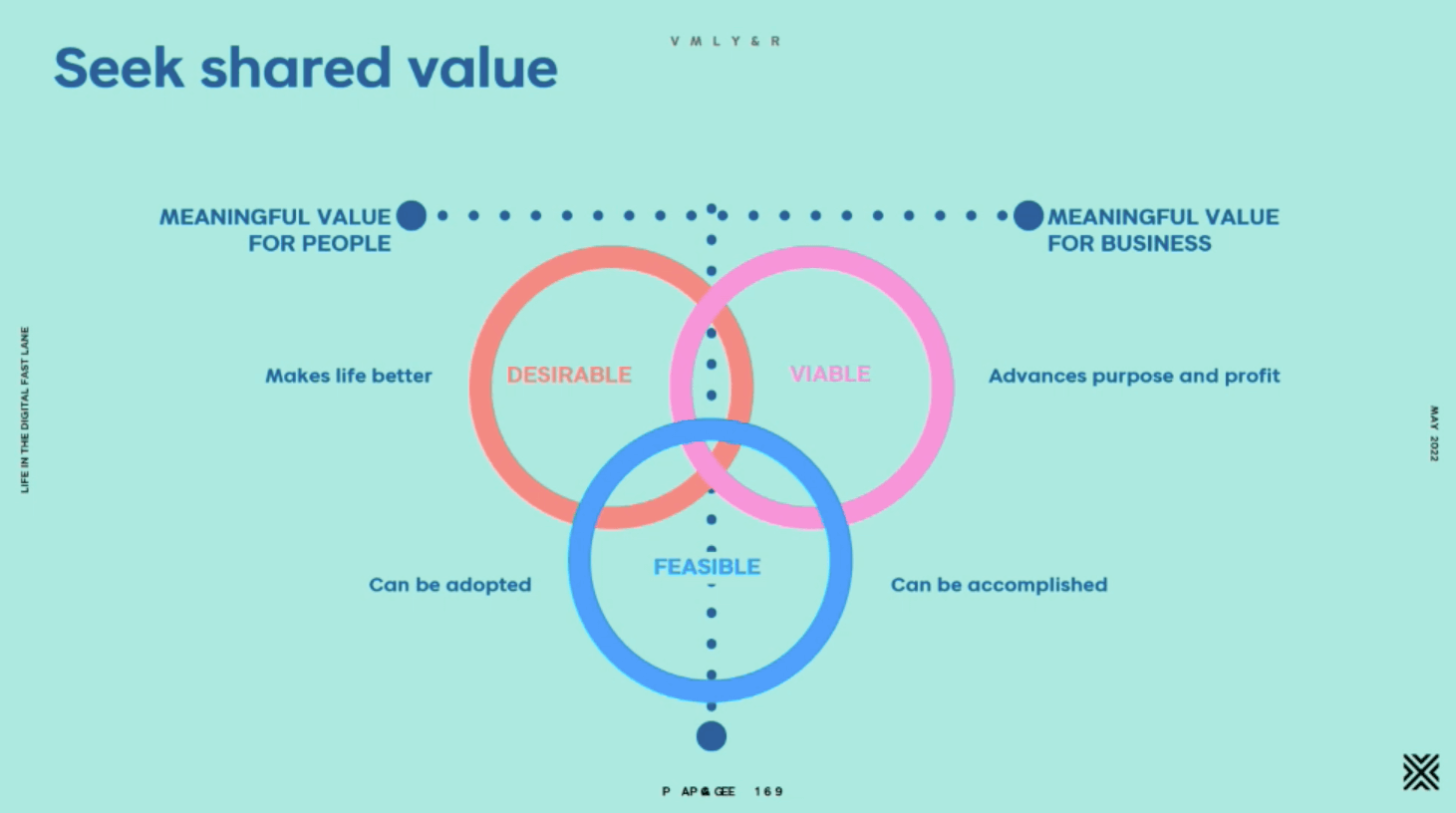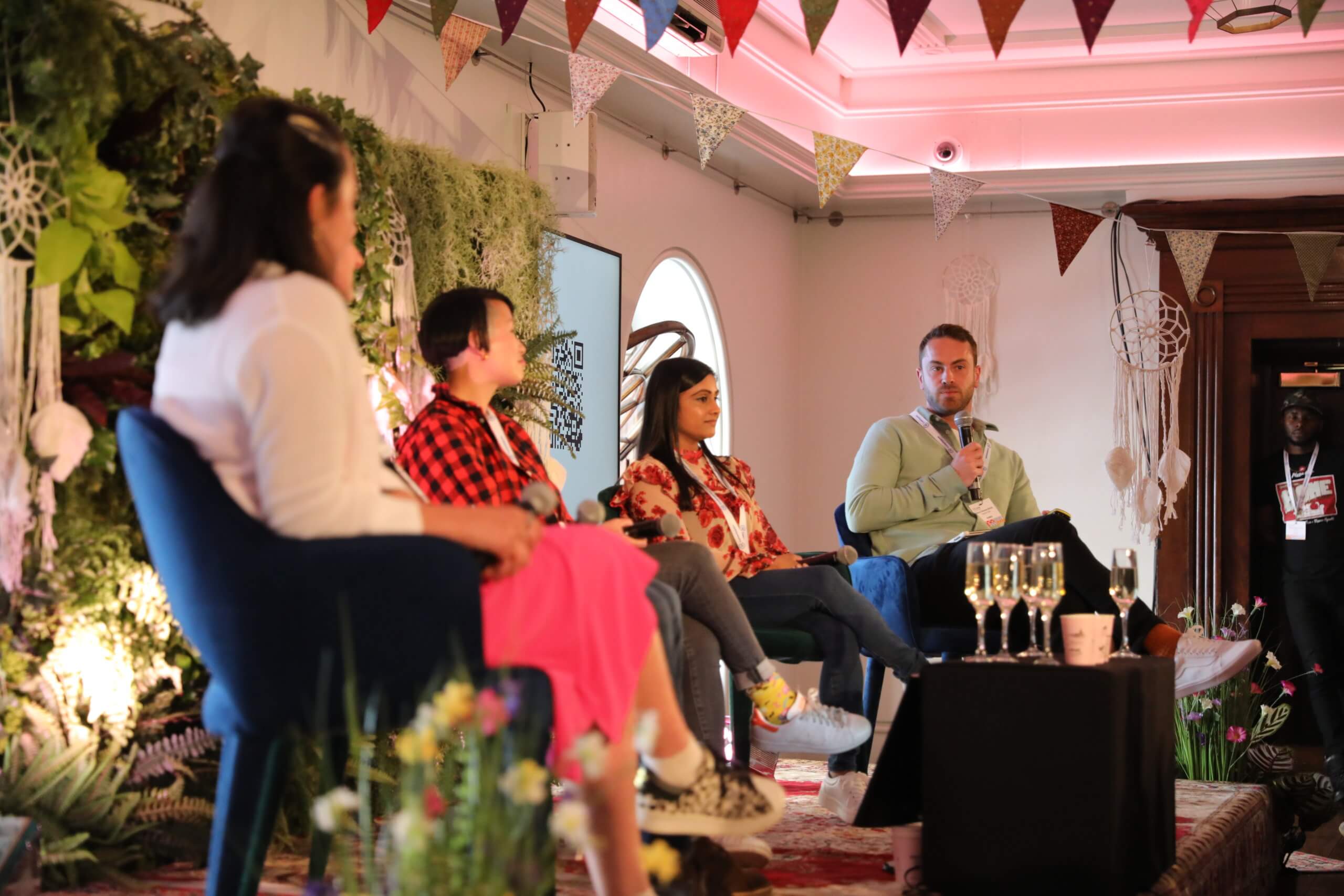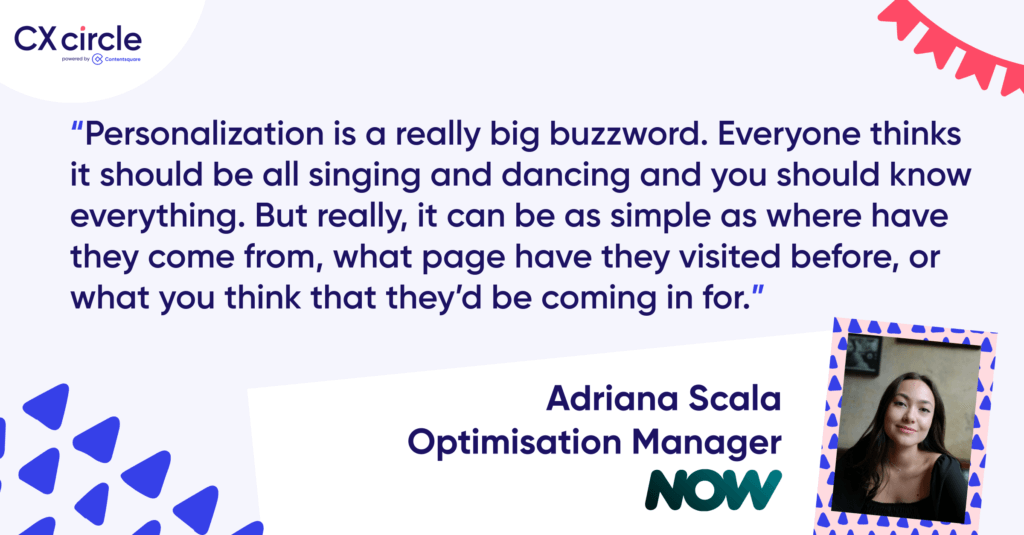
Get expert insight from CX superstars
Catch up on the best of CX circle May 2022 by watching our on-demand videos with Office, Now, Made.com and other digital leaders.

Glow sticks, disco yoga, and digital superstars, this year’s CX Circle was full of festival madness. We had a full house with over 300 festival-goers and close to 1,000 attendees tuning in online—that’s over 50% more attendees than our 2021 event!
It’s safe to say, our incredible line-up of speakers from leading UK brands like Pandora, Ocado, VMLY&R, and Made.com (to name a few) brought their A-game. From data analytics to personalization to human-centered design, they packed plenty of insights and meaningful takeaways into each session.
To recap the day, here are the highlights from our most popular sessions (based on your feedback). Check them out below 👇
Get expert insight from CX superstars Catch up on the best of CX circle May 2022 by watching our on-demand videos with Office, Now, Made.com and other digital leaders.
Gareth Drabble, Director of Customer Success at Contentsquare, kicked off the event with his session all about creating a holistic digital customer experience.
“No longer is experience analytics seen as a nice to have, it’s a must-have. It’s an essential part of your technology stack for any serious digital organization,” says Gareth. “We’re at this tipping point now. You have to build your strategy, your people, your processes around this mindset of delivering superior customer experiences.“

During his session, he introduced three key topics that should be on everyone’s agenda in 2022:
#1 Privacy: the elephant in the room
With consumers becoming more aware of their data rights, Gareth predicts that cookies will be obsolete in a few years: “It will be less about figuring out who your customers are and more about understanding what they do, their experiences, and being able to react in real-time to signals of frustration, then delivering experiences on the back of that.”
#2 Get data into everyone’s hands
“Data-driven mindset, data-driven culture, data democratization, whatever you want to call it, this is now a board-level initiative,” says Gareth, “However, half of your employees still defer to making decisions based on gut feel rather than data.”
To help with this, he suggests using the POPIT (People, Organization, Processes, and IT) model for organizational change. “It’s about giving people who may be less comfortable with data access to easy-to-interpret information to help them make the decisions they need to be effective in their role.”
#3 In an impatient world, speed is key
Not only does page speed play a big role in your search performance, but it can directly impact your revenue, too: “A one-second delay in load time leads to a 16% decrease in customer satisfaction and one-second delay on mobile page load leads to a 20% reduction in conversion rate,” says Gareth.
Gareth lists three simple things you can do to improve site speed:
👉 Find out how digital experience platforms can help you do all of the above by booking your personalized demo with Contentsquare today.
Next up, Laurie Astor, eCommerce Manager at Pandora, flipped the view on how we approach data. “It’s all about the customer,” she says. “All the data we look at on our website, everything generates an emotion for people that come on our website. It’s so important not to forget about this in our day-to-day.”

To go beyond the data, Laurie shared four ways to optimize your digital customer experience by better understanding your customers:
We were honored to welcome Karen Boswell, Chief Experience Officer EMEA at VMLY&R to the Contentsquare stage again.

During her talk, she shared her passion for people. “It doesn’t matter what we do, where we are, or what your role is; it’s all about putting people first. There is a human-centered design theme to everything I do and everything I’ll talk about”
When taking a human-centered design approach to brand transformation, Karen suggests using a shared value model. “It starts to help you understand how we can bring different insights, different data points, and different ideas together.“ Here’s how the shared value model works in three simple steps…

1. Desirable: Start with your people
Karen says to always start with your people. “If you can add meaningful value to people, that’s a really good place to be. Because you can design the right thing and then, you can design the thing right.”
2. Viable: Do you have permission to be here?
Next, it’s about figuring out whether you have the right to be in that space. “You want to work out if you actually have permission to be here. As a brand and as an organization, are you allowed to be in this space?” says Karen. “If you do, then you can start to build your brand strength and stature that contributes to your bottom line. If you don’t and you get it wrong, you break the trust and you lose the customer—and it costs you more money.”
3. Feasible: Look at your tech stack
The last thing to look at is your tech stack, says Karen, “Once you’ve looked at those two things, then look at your technology stack and your data stack. Ask yourself: Can we actually make this feasible?”
We suggest watching her entire session to get more valuable insight into the human-centered design approach, and how to drive change and brand transformation within your organization.
In one of our closing sessions, panel host Harry Hanson-Smith, Regional VP of Nordics, APAC & UK at Dynamic Yield, asked speakers for one piece of advice for anyone starting their personalization journey. Here’s what they said:

1. Don’t be afraid to test
“No idea is too silly. Don’t be afraid to test an idea or go with an idea that you’re unsure of, because it can often lead to surprising results,” says Hiral Patel, eCommerce Trading Optimisation Manager at Office.
Vivienne Yong, Senior eCommerce Product Manager at Made.com adds, “Test and learn fast. But obviously don’t break anything on site.“
2. Add in user research
Matthew Wilson, Digital Development Manager at Ocado points out the importance of user research: “Couple user research into the personalization process for two reasons: It helps you manage the backlog quantity and push off ideas driven more by opinion. And secondly, for validation—if you’re designing a hypothesis, getting your idea in front of users can be really valuable.”
3. Ask someone
Adriana Scala, Optimisation Manager at Now says, “Go out and speak to your least tech-savvy family member and show them the experience and ask them really simple questions. It’s the same thing with user testing. We are so close to it all the time that we never notice tiny things.“ She adds, “Ask someone who doesn’t know about the site or the proposition at all: What do you think this means? And then you’ll immediately get ideas for what you’re doing wrong or what you haven’t said and what you could make so much clearer.”

If Dior from Pepper Your Talk’s session didn’t inspire you, then we don’t know what will! During the session, Dior shared her pearls of wisdom for living your most authentic life:
“My approach to career development is through personal development. If you cannot show up powerfully in your personal life and in who you are as a person, then you’re just going to be faking it at work and you’re going to crash and burn.” —Dior Bediako, Founder of Pepper Your Talk
She introduced her four-step process for aligning your values with what you desire. Here’s her vision board framework:
Feeling inspired? Why not give Dior’s four step-process a go?
Get more tips from leading customer experience experts like Class Pass, HSBC, ASOS, and many more by watching our on-demand recordings.